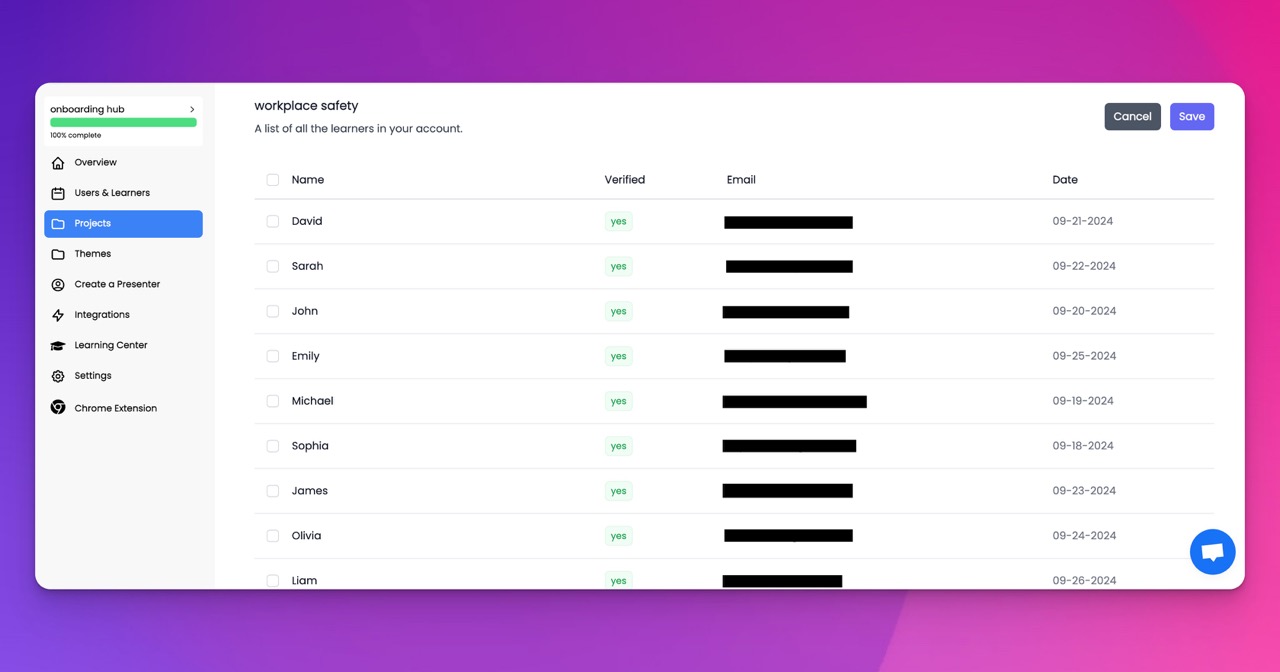🎉 Trainday now integrates with Zendesk and Hubspot 🎉 Trainday now integrates with Zendesk and Hubspot 🎉 Trainday now integrates with Zendesk and Hubspot
🎉 Trainday now integrates with Zendesk and Hubspot
🎉 Trainday now integrates with Zendesk and Hubspot
Contact
Cutting Costs, Not Corners - Reducing Turnover in Manufacturing with Data-Driven AI Training
In the competitive and often volatile environment of manufacturing, high employee turnover can significantly disrupt operations and inflate costs. "Cutting Costs, Not Corners" examines how manufacturers are using data-driven AI training to tackle this challenge head-on. By leveraging artificial intelligence and comprehensive data analytics, companies are not only enhancing the effectiveness of their training programs but also significantly reducing turnover rates. This approach ensures that training investments directly contribute to greater employee retention, satisfaction, and operational efficiency. This blog post explores the strategies and benefits of implementing AI-driven training initiatives to reduce turnover and foster a more stable and skilled workforce in manufacturing.
Understanding Turnover Through Data Analysis
The first step in addressing turnover is understanding its causes and patterns, which can be achieved through data analytics.
Analyzing Turnover Trends
Advanced data analytics tools allow companies to sift through employee data and identify trends and commonalities among those who leave. Factors such as department, tenure, training history, and performance metrics can provide insights into why turnover is occurring and which areas are most affected.
Predictive Analytics for Risk Assessment
AI can predict which employees are at risk of leaving by analyzing patterns in data. Predictive models use variables like job satisfaction scores, engagement levels, and individual performance data to forecast potential turnover, enabling proactive interventions.
Tailoring AI-Driven Training to Enhance Retention
Customized, relevant training is crucial in increasing employee engagement and loyalty, directly impacting turnover rates.
Personalized Training Programs
AI-driven platforms analyze an employee’s skills, experience, and learning pace to create personalized training programs. This tailored approach ensures that each employee's unique needs and career aspirations are addressed, increasing job satisfaction and loyalty.
Real-Time Skill Development
AI systems facilitate real-time updates and adaptations to training programs based on ongoing feedback and performance analytics. This dynamic approach keeps training relevant and aligned with both technological advancements and market demands, keeping employees engaged and continuously learning.
Enhancing Engagement Through Interactive Training
Engagement during training is key to retention, and AI can make training more interactive and responsive.
Gamified Learning Experiences
Incorporating gamification into training increases engagement and motivation by making learning more fun and competitive. AI can tailor these gamified elements to individual learning styles and progress, enhancing the overall training experience.
Virtual Reality (VR) and Simulations
AI-driven simulations and VR training environments allow employees to practice their skills in realistic and safe settings. These tools provide hands-on experience without the risks associated with on-the-job training, improving confidence and competence.
Measuring the Impact of Training on Turnover
To ensure the ongoing success of training programs, it’s essential to measure their impact on turnover and adjust strategies accordingly.
Tracking Key Performance Indicators (KPIs)
Establishing clear KPIs related to employee retention, such as turnover rates, employee satisfaction scores, and performance improvements post-training, helps in measuring the effectiveness of AI-driven training.
Continuous Feedback and Adjustment
AI tools facilitate continuous collection and analysis of feedback from employees about their training experiences and job satisfaction. This data is invaluable for continually refining training programs and retention strategies.
Conclusion
"Cutting Costs, Not Corners: Reducing Turnover in Manufacturing with Data-Driven AI Training" highlights how leveraging AI and data analytics in training can significantly reduce turnover rates in manufacturing. By understanding the root causes of turnover, tailoring training to meet the diverse needs of employees, and continuously adapting training methods, manufacturers can ensure a more satisfied, skilled, and stable workforce. This strategic approach not only cuts costs associated with high turnover but also enhances overall operational efficiency and competitiveness in the market.
Accelerate Compliance.
Deliver OSHA-Ready Courses Instantly.
Empower your team with data-driven training solutions tailored to your industry's safety standards. Stay compliant, reduce risks, and boost productivity with AI-powered course creation.
